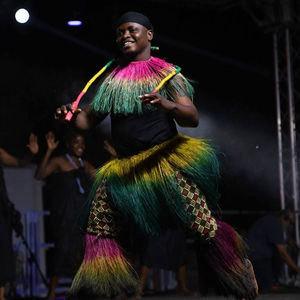OSHALA
Benin, former Dahomey at the time of French colonization, is one of the lungs of Africa with its port of Cotonou but also its lakes and lagoons that occupy the flat part of the country. Because, apart from a few shy bumps, Benin is one of the flattest countries on the entire continent. The elongated shape is its other characteristic. It allows him to penetrate deep from the south to the north of the continent, that is to say to the Sahel, towards other civilizations, other religions and already a completely different climate. In short, it is a country of transition and its civilization has always been felt.
Here, the fishermen come into contact with the herders who travel north and the irrigated areas of the south favouring agriculture, and thus border on the dry areas of the north that are traversed by the warm wind coming from the heart of the continent. Similarly, animist populations frequent those of Christian influence and Islam makes a noticeable entry into an already complex religious system. But it is also necessary to add the voodoo, because this religion that developed with the sale of slaves on all the eastern facade of the American continent was born here and still practiced there. Without knowing these important points, how can we appreciate the cultural richness of the Ensemble folklorique « Oshala » show?
The group’s programme takes into account all these influences. Voodoo ceremonies justify masks that are scary and allow the elders to exercise authority over villages. The northern regions have animistic ceremonies that correspond to the lives of the men and women of the bush. The tradition also evokes the wars that could not escape a country placed across the great roads of nomadism or invasions. Finally, the show reminds us that this country has probably been populated since the 14th century and therefore its culture has existed for a long time.
The troupe is not lacking in originality. The dancers always seem to have fun even from their stilts. The percussionists play with the greatest seriousness of the rhythms that serve from village to village to transmit the news or to rejoice the funeral ceremonies, and in the show to constantly lead the evolutions and acrobatics of the dancers. And the leader of the unmoved troop under his big umbrella, pulling on his pipe probably swapped for two with an old bucanier of the seas, breathes this nobility of the Africans who hold power are much closer to their gods than any human being and richer in knowledge than any other scholar.
A show rich in interest and discoveries, symbol of an eternal Africa, that of griots, drums and festive costumes.













